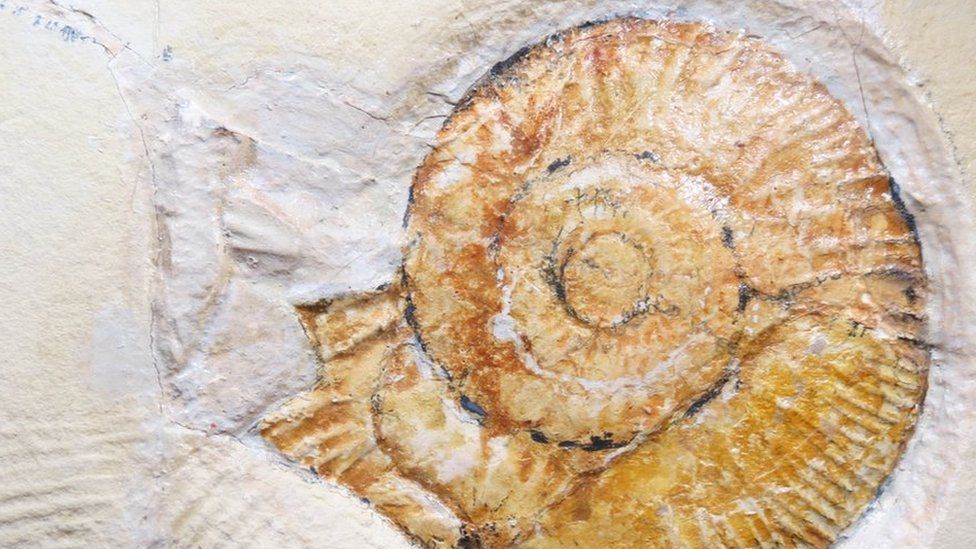Rare ammonite 'death drag' fossil discovered
- Published

The "death drag" of a prehistoric "squid" - or ammonite - made 150-million-years-ago has been preserved as an incredible fossil.
The animal's shell made the 8.5m-long mark as it drifted along the seafloor after its death.
Ammonites are one of the most common and popular fossils collected by amateur fossil hunters.
This specimen (Subplanites rueppellianus) was found in a quarry in southern Germany.
Its shell was preserved alongside the mark it made as it drifted along the floor of a tropical lagoon in a steady current.
Such marks are rare in the fossil record.
"The fossil is perhaps one of the most unlikely of fossils to have ever been preserved, let alone be discovered," said Dean Lomax from the University of Manchester, UK, who led the research. "A real chance find."
The new specimen "provides a snapshot of a moment that is captured in time - it really tells a story", he added.
The length of the drag mark far exceeds previous discoveries, say researchers from the UK, Germany and Spain.
Ammonites lived during Jurassic and Cretaceous times. The marine animals had gas chambers, which they used to control buoyancy and movement.
This particular shell was probably empty, as the animal had died, but would have been filled with gas.
This meant it did not sink straight to the bottom of the sea, but was dragged along the floor by a current before falling over.
"For scientists, ammonites, like all fossils, are an important group to study," said Dean Lomax.
"With a global distribution and thousands of species known, scientists are able to study a wide-range of types, from minute species to those as large as tractor tyres."
Follow Helen on Twitter.